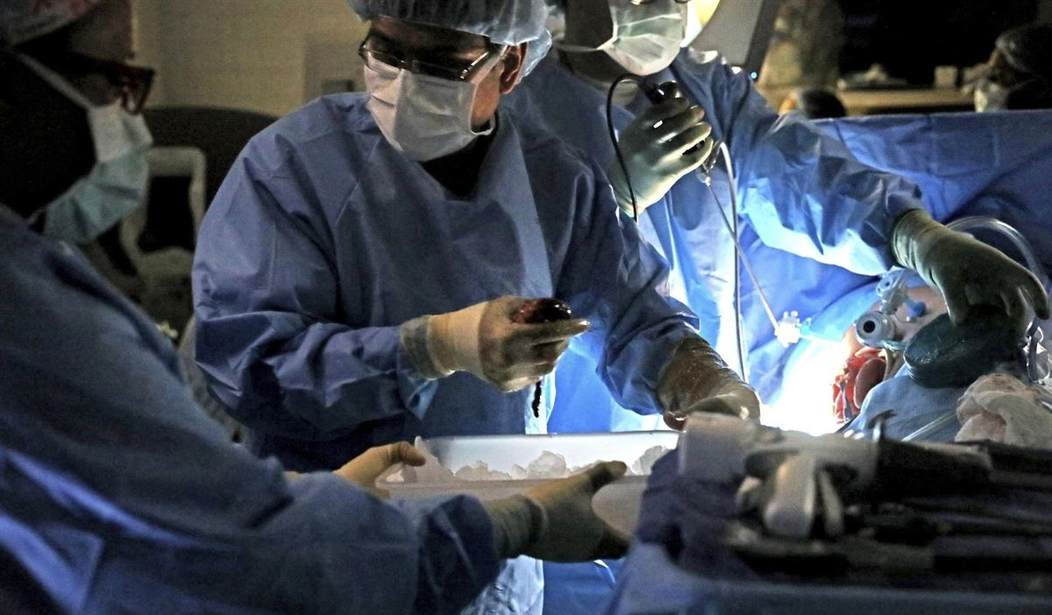A couple of months ago, I wrote of some incredible breakthroughs in determining when someone is "dead." There has been controversy through the centuries as the legal, religious, and medical definitions of death have clashed, leading to confusion and unnecessary pain for loved ones.
In fact, the journals are replete with examples of people declared "dead" according to the legal or medical definition of death, only to later be found "alive" in the sense that the legal and medical definitions of death did not apply.
To be clear, people declared "dead" rarely "recover" and lead everyday lives. The definition of death they fail to meet is usually related to brain function not entirely ceasing.
Related: How to Tell If You're Dead
"Brain death" is a relatively new concept in end-of-life studies. It became possible to measure brain activity accurately in the 1960s. Now, the legal definition of death includes the “irreversible cessation of all functions of the entire brain, including the brain stem.”
"Irreversible" implies "no hope for improvement." While "brain death" is accepted in all 50 states and most Western countries, there is still controversy due to the "irreversible" standard. Take the case of Jahi McMath, a young girl who experienced complications from surgery, which led to the declaration of brain death. Her family fought the determination of brain death and won. Jahi lived several more years on a ventilator with "minimal consciousness," according to L.S. Dugdale, physician and ethicist at Columbia University, writing in The Free Press.
The original report advocating that "brain death" be adopted as a medical standard for death is from a Harvard committee studying the issue in 1968. Previously, the standard was the irreversible cessation of the heart's function. The committee found that there were two primary reasons for adopting brain death as a clinical standard for death. The first was that medical technology allowed the heart to keep beating on machines even though there was no chance it would ever beat on its own again.
The second reason was more ethically problematic: “Obsolete criteria for the definition of death can lead to controversy in obtaining organs for transplantation.” Killing one person to keep another alive was controversial even in 1968. The committee carefully developed criteria to make "brain death" as much of a sure thing as it could.
The committee tried to split hairs about taking organs from the living because of the nature of transplants. Once dead, the heart stops sending blood to the organs, which, relatively quickly, begin to die. It's always been a race to harvest organs that could save the lives of 20 or more people.
But the temptation to prematurely declare death has been an ethical dilemma since the 1960s.
Now, three New York doctors have suggested modifying the brain death standard that would allow many more organs to be harvested. They note that the 1968 committee removed the line, “There is a great need for the tissues and organs of the hopelessly comatose in order to restore to health those who are still salvageable.”
The New York doctors don’t need patients to be brain-dead, strictly speaking. They just need them to be nonresponsive and unlikely to wake up. But therein lies the rub. If we expand the definition of death to include patients who are alive—unconscious, yes, but definitely showing brain activity—we might end up killing people who could regain consciousness. That happened recently in Kentucky, when a man woke up just before the planned retrieval of his organs. A spate of Kentuckians are now removing their names from the organ donation registry.
Expanding the definition of death makes a mockery of medical practitioners who seek to restore their patients to health. An expanded definition of death for the sake of procuring more organs means killing life to save life. Not only is this antithetical to the profession of medicine, it undermines public trust in organ transplantation altogether.
Dr. Dugdale reminds us that "Thirteen people die each day waiting for an organ." He says pressure on transplant programs is immense, and motivations of the industry are not untainted." In fact, there are substantial sums of money for health systems in harvesting organs. While most reputable programs are non-profit, that doesn't lessen organ competition or draw any clearer lines between right and wrong.
Hopefully, this argument will become moot once we can grow our own replacement organs. Last year, researchers from UC San Francisco and Cedars-Sinai Hospital developed a new way to prompt stem cells to form specific organs. In the near future, we should be able to prompt stem cells to grow any organ we might need from our own bodies.
Perhaps then, we can return to a less problematic definition of when someone can be declared dead.










